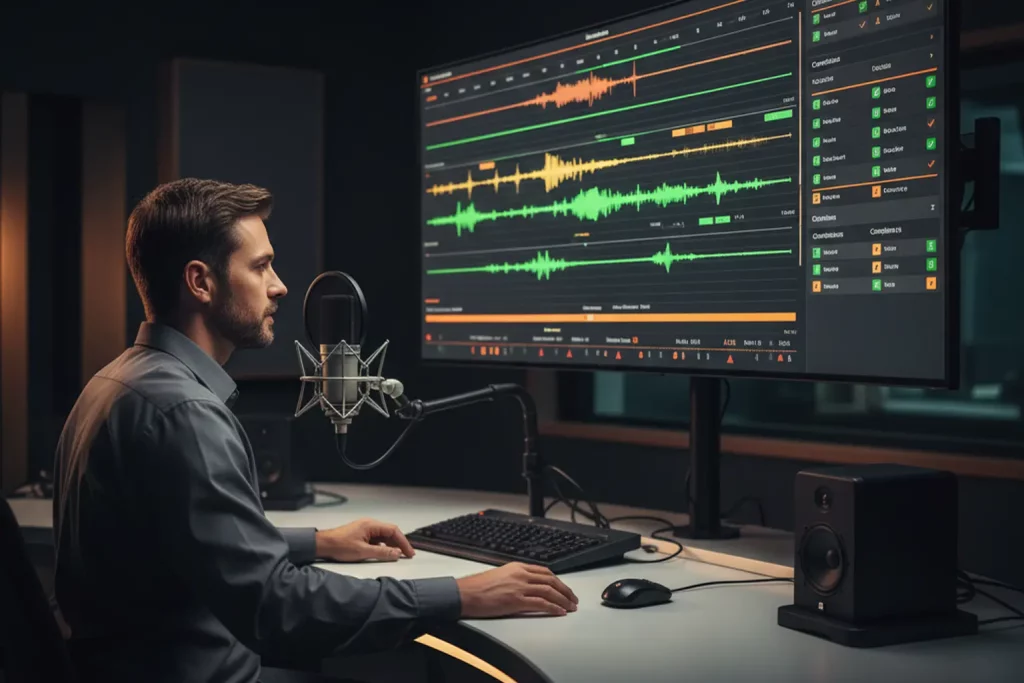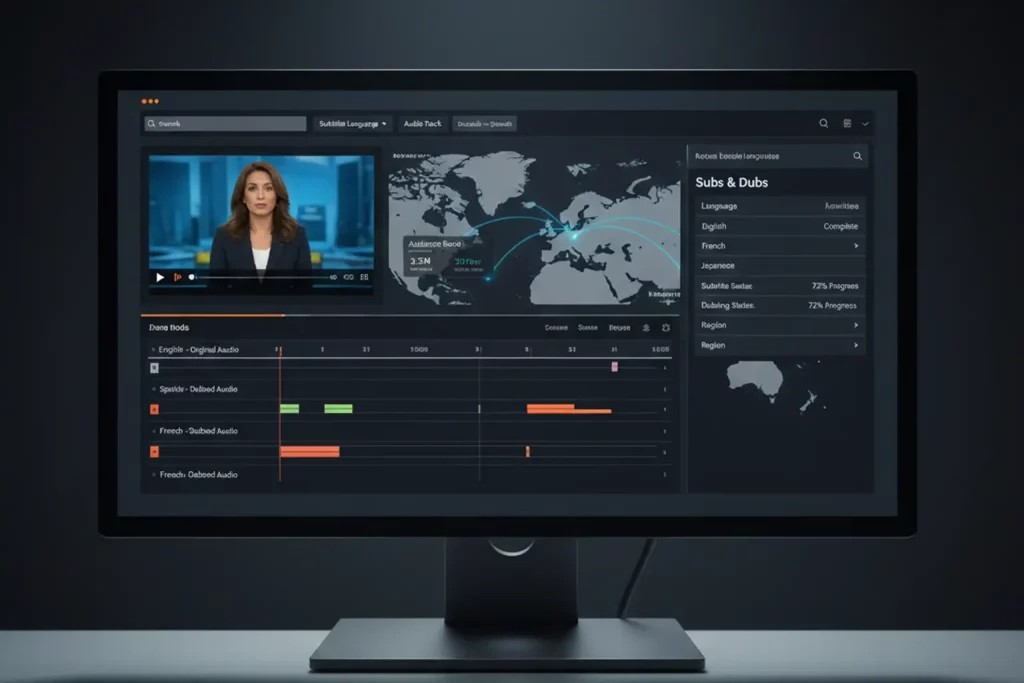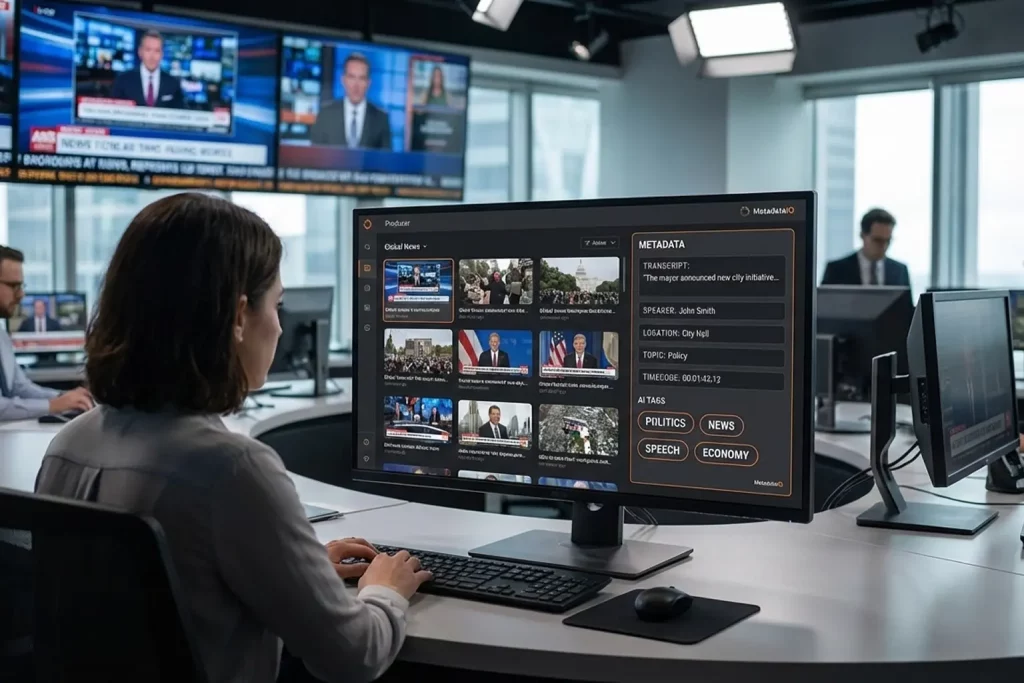Before we get into the details of learning everything about transcription, let us first understand why transcription came to gain so much importance. Studies show that the average adult in the USA spends 11 hours per day accessing some form of media and a staggering 6 hours watching videos. With such rapid media consumption, we often find ourselves unable to consume media with volume.
This is where transcription can help. Transcription is one of the most effective accessibility tools there is. Businesses that provide transcription with their audio and video content increase their opportunities to retain viewers.
What is transcription?
In layman’s terms, transcription is the process of converting video or audio into a written document. Written transcriptions are readable records of audio or video content. Transcription differs from closed captions, as the former is just text with no time information, and the latter is time-coded to the video.
Transcription converts speech or audio recordings into written or typed text. It is a manual or automated process that involves listening to an audio recording and transcribing its contents word for word.
Transcription is used in various fields, including medicine, law, journalism, research, and entertainment. Medical transcriptionists, for example, listen to recordings of doctor-patient consultations and transcribe the conversation into written reports, which are then used for medical records and billing purposes. Legal transcriptionists transcribe court proceedings, witness testimonies, and other legal documents.
The Different Types of Transcription
There are two main types of transcription: manual and automated. Manual transcription involves a human transcriber listening to the audio and typing the text. Automated transcription, on the other hand, uses speech recognition technology to transcribe the audio.
Both manual and automated transcriptions have their advantages and disadvantages. Manual transcription is more accurate and can handle difficult accents and languages, but it is time-consuming and expensive. On the flip side, automated transcription is faster and more cost-effective, but it can be less accurate, and it may struggle with complex speech patterns.
Here are the main differences:
Manual transcription: Manual transcription means a human transcriber converts an audio or video recording into a written document. The transcriber listens to the audio or watches the video, then types the spoken words into a text file or document. Manual transcription may involve using specialized transcription software or tools, or it may be done using a simple word processing program. Manual transcription requires good listening skills, attention to detail, and the ability to capture the spoken content of the recording accurately. Manual transcription is often used in legal, medical, academic, and business settings as well as in the media and entertainment industries.
Benefits of manual transcription:
- Accuracy: Human transcriptionists can accurately capture the spoken content of a recording, ensuring that the transcribed document is free of errors or inaccuracies.
- Customization: Manual transcription can be tailored to specific needs. For example, if the recording contains technical terminology or industry-specific jargon, a human transcriptionist can accurately recognize and transcribe those terms, whereas automated transcription tools may struggle with such terminology.
- Confidentiality: Manual transcription offers greater confidentiality and security for sensitive recordings, as human transcribers can be vetted and trained to adhere to strict confidentiality policies.
- Flexibility: Manual transcription can be customized to fit the client’s needs. For example, clients may request time stamps, speaker identification, or other features that automated transcription tools may not be able to provide.
- Quality control: Manual transcription allows for quality control measures to be put in place, such as having a second transcriber review and verify the accuracy of the transcription.
Where can manual transcription be used?
Manual transcription can be used in various contexts where accuracy and attention to detail are essential. Here are some examples of use cases for manual transcription:
- Legal: Manual transcription can be used in legal settings to transcribe depositions, court hearings, and other legal proceedings. This ensures a clear and accurate record.
- Medical: Manual transcription can be used in medical settings to transcribe patient consultations, medical reports, and other medical documentation. This ensures that accurate and complete records are maintained for patient care and legal purposes.
- Academic: Manual transcription can be used in academic settings to transcribe lectures, interviews, and research interviews. This allows researchers to analyze qualitative data and maintains a clear and accurate record.
- Business: Manual transcription can be used in business settings to transcribe meetings, interviews, and presentations. This ensures a clear and accurate record for reference and decision-making.
- Media and Entertainment: Manual transcription can be used in media and entertainment settings to transcribe interviews, scripts, and other audio or video content. This ensures that accurate captions or subtitles are created for accessibility purposes, and a clear and accurate record is maintained.
Automated transcription: Automated transcription uses software or tools to automatically transcribe an audio or video recording into a written document. The software uses speech recognition algorithms to convert the recorded spoken words into text. Automated transcription can be performed using various tools, including software applications, online platforms, and speech-to-text APIs.
Automated transcription tools can be helpful in quickly transcribing large volumes of audio or video content, as they can transcribe the content in real time or near-real time. However, automated transcription tools may struggle with accurately capturing certain aspects of the recording, such as accents, background noise, or technical terminology. In addition, automated transcription tools may produce errors or inaccuracies that can require significant editing and proofreading to correct.
Automated transcription can be cost-effective and efficient for transcribing simple or routine content, such as meeting notes or interviews. However, manual transcription may be a better option for more complex or sensitive content, such as legal or medical recordings, to ensure accuracy and confidentiality.n
Benefits of automated transcription:
- Speed: Automated transcription can transcribe large volumes of audio or video content quickly, allowing for faster turnaround times.
- Cost-effectiveness: Automated transcription can be more cost-effective than manual transcription, especially for routine or straightforward content.
- Convenience: Automated transcription can be done using software applications or online platforms, making it a convenient option for users who need to transcribe audio or video content quickly and easily.
- Real-time transcription: Some automated transcription tools can provide real-time or near-real-time transcription, which can be helpful in situations that require a quick turnaround.
- Efficiency: Automated transcription can be helpful in quickly transcribing routine or straightforward content, freeing up time for users to focus on more complex or high-priority tasks.
Where can automated transcription be used?
Automated transcription can be useful when speed and cost-effectiveness are essential. Here are some examples of use cases for automated transcription:
- Business: Automated transcription can be used in business settings to transcribe routine meetings, calls, and other non-critical audio or video content. This can free up time and resources for more critical tasks.
- Education: Automated transcription can be used in education settings to transcribe lectures, webinars, and other non-critical audio or video content. This can help students who need to review content and may be beneficial for accessibility purposes.
- Media and Entertainment: Automated transcription can be used in media and entertainment settings to provide automated captions or subtitles for videos, which can be helpful for accessibility and SEO purposes.
- Market Research: Automated transcription can be used in market research to transcribe survey responses or customer feedback, allowing researchers to analyze the data more easily.
- Podcasting: Automated transcription can be used in podcasting to quickly and easily transcribe episodes, allowing podcasters to repurpose content into blog posts, articles, or other forms of content.
- In summary, transcription is converting audio or video content into written text. Transcription can be done manually or automatically, depending on the context and requirements of the task. Manual transcription is typically more accurate and reliable than automated transcription and may be necessary for complex or sensitive content, such as legal or medical recordings. Automated transcription can be more cost-effective and efficient and may be suitable for routine or simple content, such as business meetings or educational lectures.
- Regardless of the method used, transcription can provide many benefits, including improved accessibility, better record-keeping, and more accessible qualitative data analysis. Transcription is valuable in various settings, including business, education, legal, medical media, and entertainment. With technological advancements, automated transcription tools have improved significantly, providing faster and more accurate results and making it a cost-effective and efficient solution for transcribing simple or routine content.




